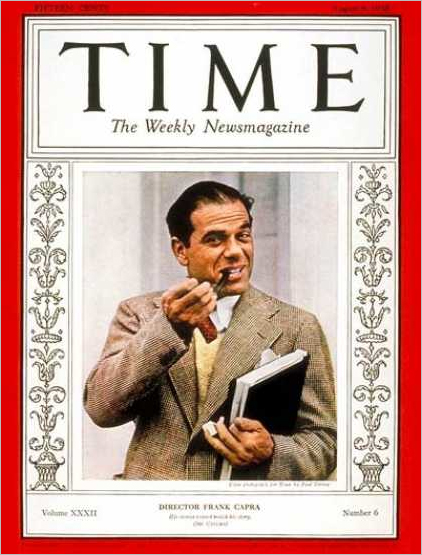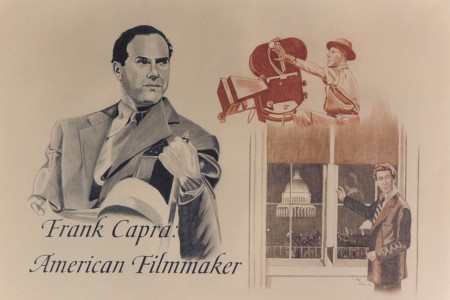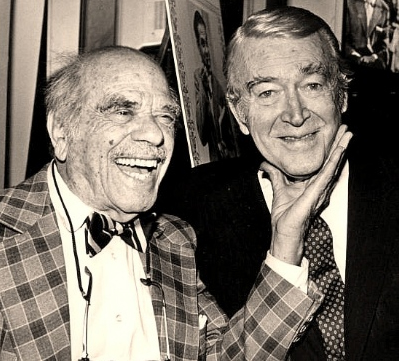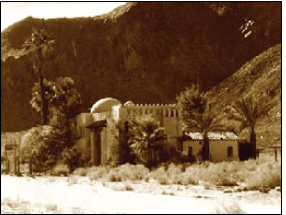Just to finish up on Frank Capra…
I titled yesterday’s blog entry “It’s a wonderful life” in obvious reference to Capra’s most beloved movie of the same name. But as for Capra himself, it wasn’t as wonderful a life as you might imagine for someone who won three directorial Oscars so early in his career.
After the Japanese attacked Pearl Harbor on Dec. 7, 1941, Capra joined the Army, spending most of his time producing propaganda movies. When the war ended, Capra went back to writing and directing movies, producing It’s a Wonderful Life in 1946, the quintessential Capra fantasy that most closely reflected his own belief that “no man who has friends is a failure.”
The film, starring James Stewart as a small-town banker who is saved from suicide by an angel, was harshly criticized when it came out and did little business. In fact, Capra always considered the film itself to be a failure. And just like that, the famed director’s career was pretty much over.

Frank Capra made the cover of Time magazine on Aug. 8, 1938, but less than a decade later, his movie career was over.
Although he made a few more movies in the ‘50s (anyone remember 1959’s A Hole in the Head?), “the remainder of his work consisted of formulaic exercises and remakes of earlier films, banal star vehicles and clinkers pure and simple,” according to a 1992 story in the New York Times. It was, wrote Joseph McBride in his biography of Capra, “the most precipitous decline of any American film maker since D. W. Griffith.”
Why the decline? One critic, William S. Pechter, believed that Capra had nothing more to say in his films. The fact of the matter was that Capra was very much a man of his time “and the times had passed him by.”
According to McBride’s biography of the director, the period after It’s a Wonderful Life was grueling and terribly sad for Capra. “Capra found it increasingly difficult to secure work. One sign of Capra’s desperation in these years was his offer to direct an episode of the television show “The Addams Family.” Another was his idea for a movie on the life of St. Paul—starring Frank Sinatra. He suffered from debilitating headaches and was often suicidal. Though his first wife and many of his closest collaborators, including Harry Cohn and Robert Riskin, were Jewish, he now began blaming the Jews for his troubles. He finally retired from film making in 1966 and devoted the next several years to writing his autobiography. “The Name Above the Title” was published in 1971, and appears to have been a lie practically from beginning to end.
“Amazingly, Capra hung on for another two decades. When he died in 1991 at the age of 94, he had been out of the movie business for 25 years. He had not made a major motion picture for 45 years. No doubt many people who saw his obituary were taken aback, believing he had died long before. The truth is, he had.”








Recent Comments